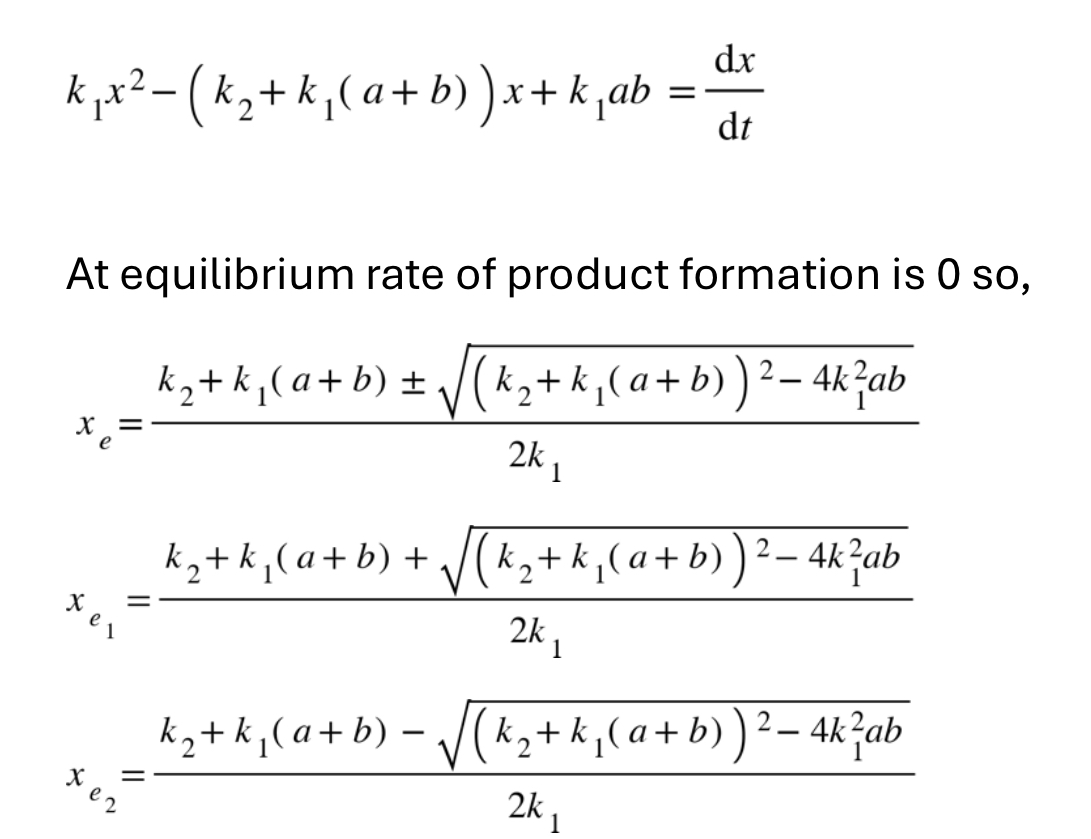Say there is a reversible reaction, A + B ⇌ AB. Let K1 be rate of forward reaction and K2 be the rate of backward reaction.
When I try to solve such an equation for AB (the concentration of AB produced at any point of time is taken as x, given that initially no AB was present) taking initial concentrations for A as a and B as b, I get two values for AB at equilibrium.
Also when I try to solve further for x I get the following results.
Result 2 :
Now, when I try to put x for $x_{e_1}$ I get the result $x_{e_1}$= $x_{e_2}$. To me this seems inconsistent with the result I had observed before if there can be more than one values at equilibrium which is also unlikely (Result 1).
So can anyone please interpret/correct the above results for the obtained values of x. Obviously this tells me that values under square root in the obtained roots are zero but still since I couldn’t find the solution anywhere I would like to confirm the answer.


